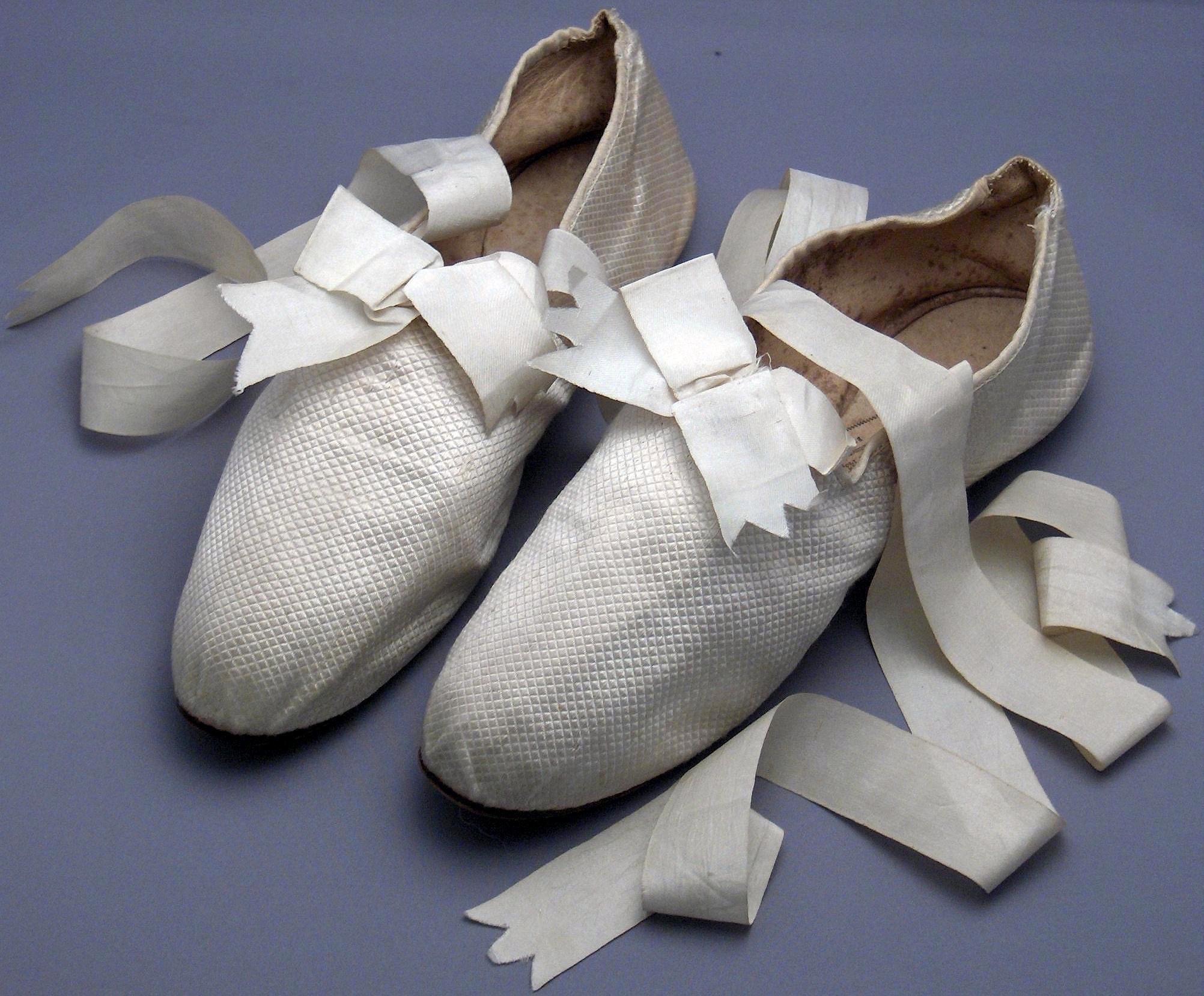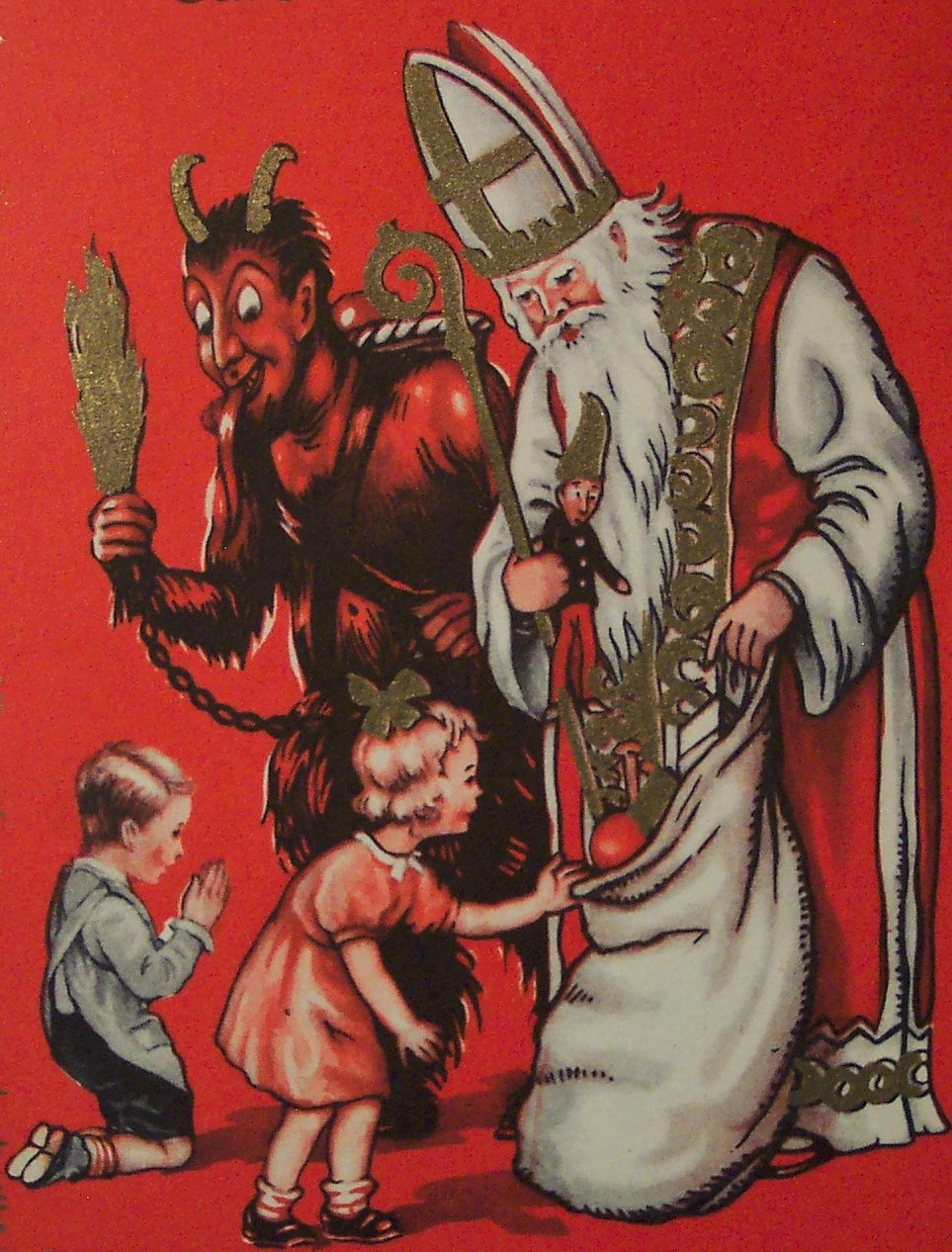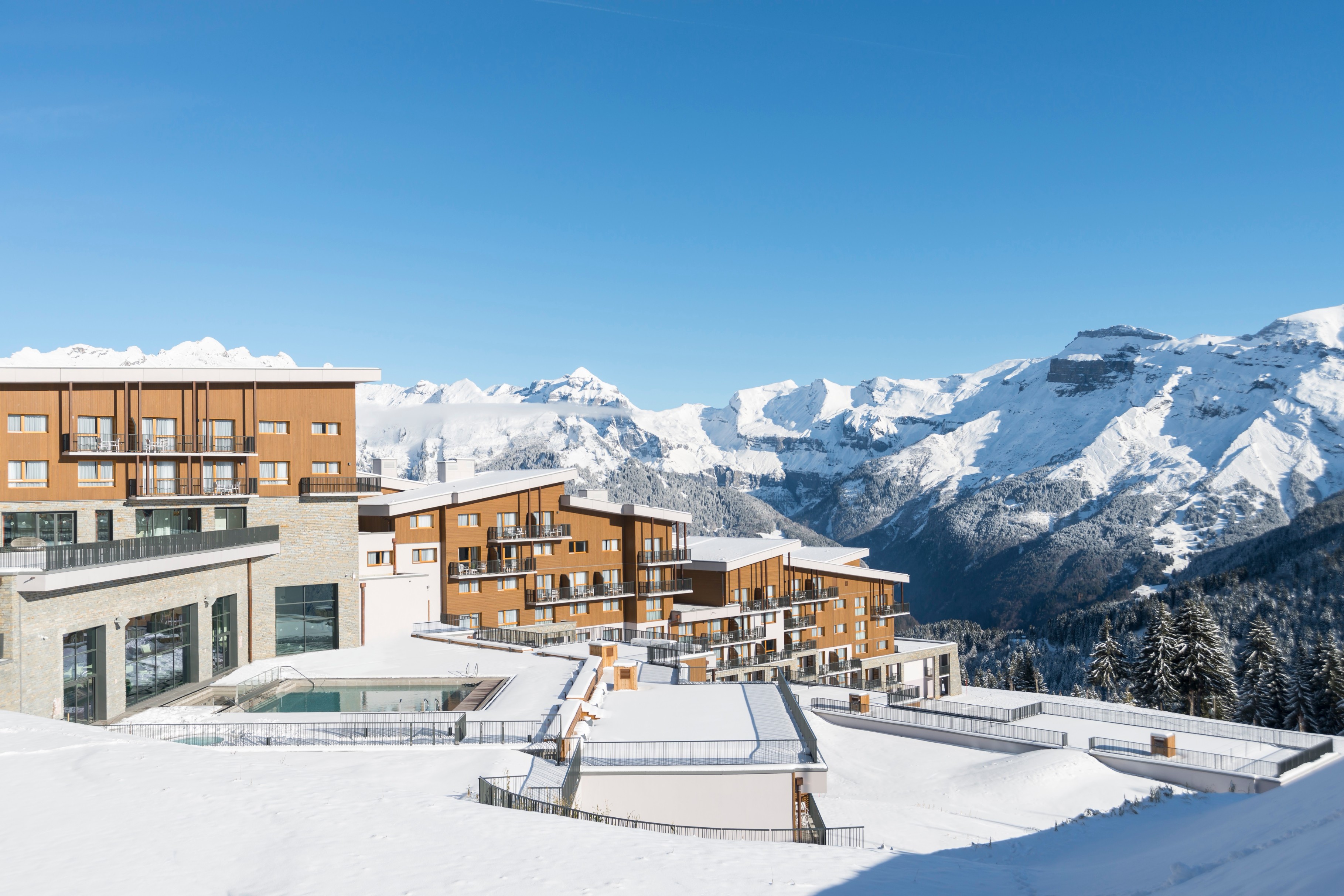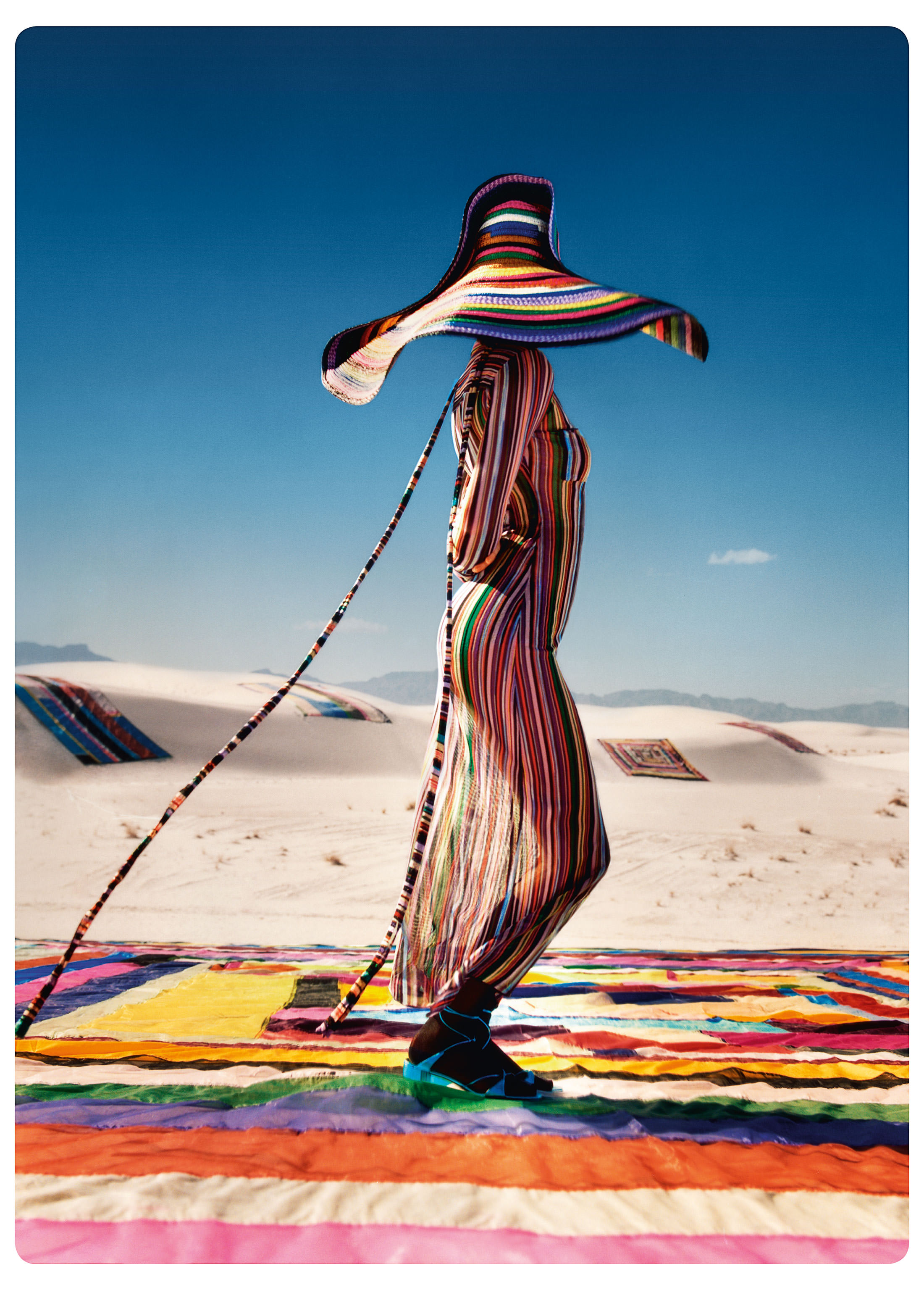Canadian Fashion History: The Evolution of Alpine Chic
The birth of après ski.
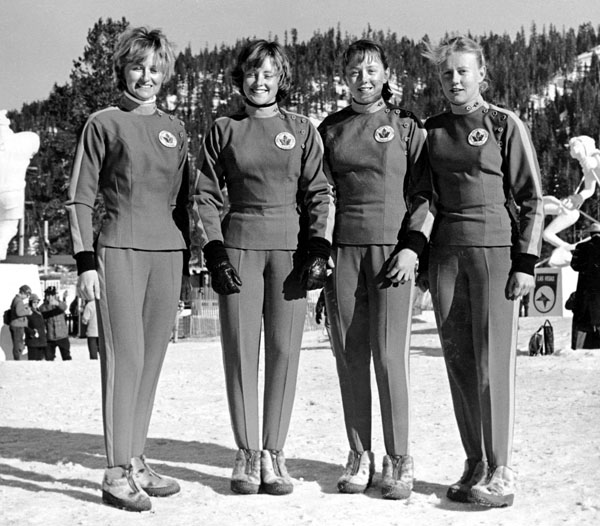
Canada's women's alpine ski team, Ann Heggtveit (slalom gold medal winner), Nancy Holland, Nancy Greene and Elizabeth Greene, participates at the 1960 Squaw Valley Olympics. (CP Photo/COA).
Canadian fashion is a product of avid adventurism, outdoor spirit, and long, chilly winters. Considering our geography and seasonal shifts, Canada’s superior knowledge of winter trends and styles comes as no surprise.
For après ski and chalet style, one thinks of slim-fitted ski suits, cozy knits, and chic turtlenecks against a backdrop of mountain ski resorts with rustic furnishings. Although ski attire started as anything but fashionable, the Canadian slopes have borne witness to distinct fashion movements throughout the decades.
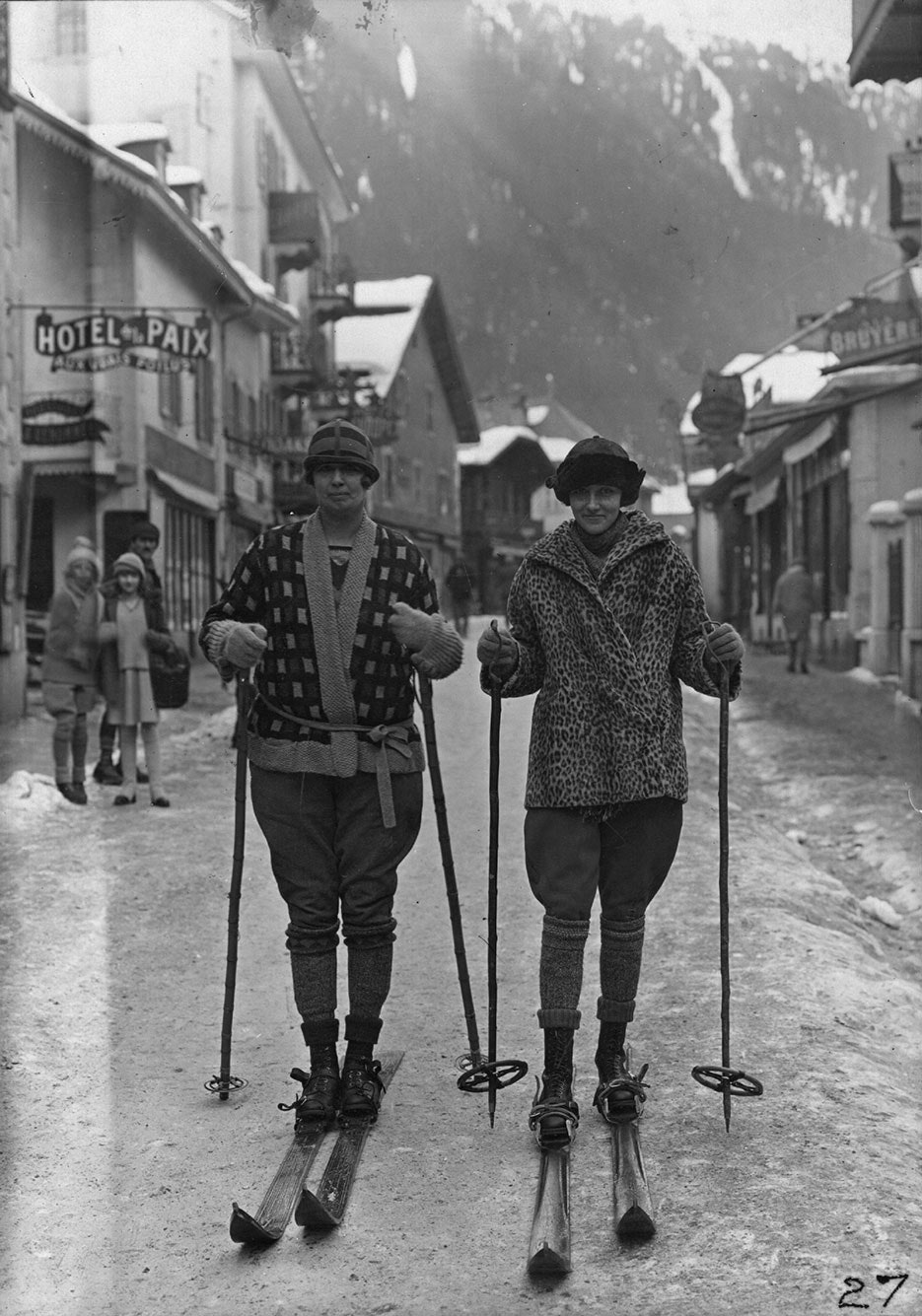
Skiing in the 1920’s. Photo from Conde Nast Traveller.
Beginner
Skiing in Canada began as a way to explore the region’s outstanding scenery while filling the need to establish social winter sports amongst the adventurous elite. Introduced by the Scandinavians, the first recorded ski adventure in Canada was a solo excursion by Mr. A. Birch, a Norwegian who skied from Montreal to Quebec City on a pair of “Norwegian snowshoes” using a single pole in 1879. The sport was soon introduced to the Rocky Mountains in Banff, Canada’s first national park, by Scandinavian Canadian Pacific railway workers and Swiss mountaineering guides, and has since become “the very heartbeat and the pulse of Canadian Rockies culture.”
In the late 1800s, the blanket jacket became the uniform for members of the Montreal Snow Shoe Club, and it continued to be popular with those who formed the Montreal Ski Club at the beginning of the 19th century. Thick wool garments, long skirts, and understated colour palettes filled the slopes as feminine silhouettes were influenced by the Gibson Girl and men’s attire by the rugged fabrics and styles of mountaineers.
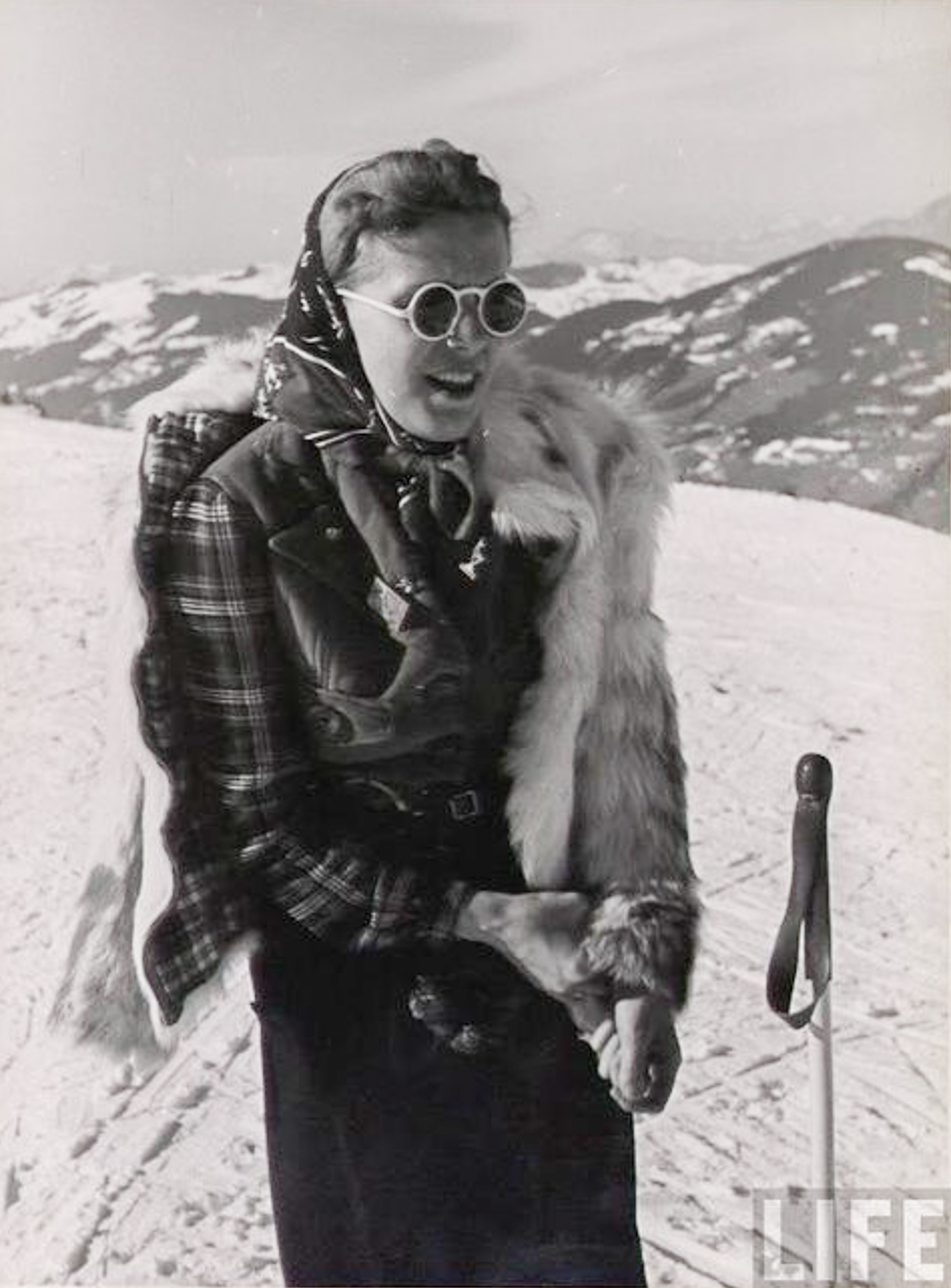
Hermes Archives 1940’s from Life Magazine.
As skiing became a more established and glamorous alpine social sport in Europe, high-end designers began to take note. In the 1920s, women ditched their skirts as designers such as Lucien Lelong, Edigio Scaioni, and Madeleine Vionnet began producing fashionable skiwear that featured billowing two-piece pantsuits, art deco patterns, and warm knit accessories. Hermès took things one step further a decade later, introducing its first and only skiwear line (until 2013).
Chic alpine wear and ski fashion had officially been born.
Intermediate
Emilio Pucci and his artistic director, Massimo Giorgetti, who had their own take on skiwear, introduced chalet style with their form-fitting, colourful ski uniforms, that caught the eye of Harper’s Bazaar editor Diana Vreeland, who published the line in the 1948 December issue.
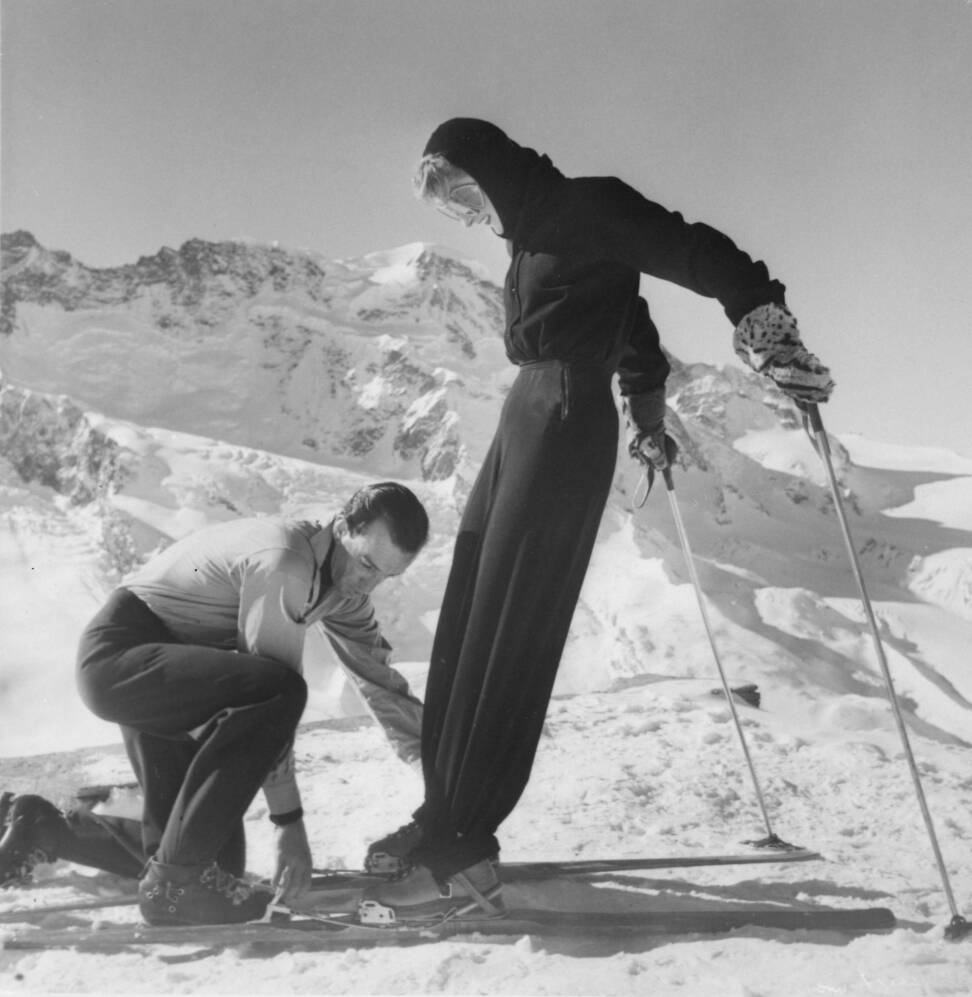
Marquis Emilio Pucci fastens a ski for Mrs Poppi de Salis, who wears a Pucci ski outfit; Zermatt, 1947. Harper’s Bazaar, December 1948. © Emilio Pucci.
As ski fashion permeated into American media, Canadians were taking note, stocking department stores with the latest designer ski trends and styles while also developing their own cold-weather gear that celebrated the emerging ski hills and resorts. The first Canadian chairlift was at Tremblant in 1938.
At the same time Bogner, established by German fashion designer and professional skier Maria Bogner, released its iconic stretch pants on the runway, giving ski fashion a place in haute couture. The Canadian rival to the Bogner trouser was a slim-fitted, tapered ski trouser designed by Montreal tailor Irving Margolese and produced in the city’s manufacturing district. Irving’s loose yet streamlined pants gave way to a blend of design and function that was popularized by TIME magazine and could be found across America in various Saks Fifth Avenue locations, including New York, Chicago, and Beverly Hills.
The famous American ski and snowboard filmmaker Warren Miller theorized that these sleek, stretchy pants introduced sex into the sport and credited that for skiing’s heightened popularity going into the second half of the 19th century. “Anyone who was in reasonable shape could put on a pair of her stretch pants and look as sleek and attractive as someone in a James Bond movie,” he said of Maria Bogner’s skiwear.
Throughout the ’50s and into the ’60s, skiwear became more accessible and made its way off the runways and into the average family home. The 1960 Winter Olympics solidified the decade’s ski fashion movement as Canadian alpine skiers Anne Heggtveit, Nancy Holland, Nancy Greene, and Elizabeth Greene competed for the first time on the world stage. Personal expression began to be seen in skiwear as bright colours filled the hill and plastic buckled ski boots, fibreglass skis, double lens goggles, and snap break bindings revolutionized the sport. Everything continued to get tighter, lighter, and more aerodynamic.

Alpine Designs ski outerwear in the 1970s.
By the ’70s and ’80s—considered by some the golden age of ski fashion—ski villages, chalets, and alpine backcountry retreats were flourishing in Canada. Wool, nylon, cotton, and polypropylene were used in new technological base layers that fit under bright, geometrically designed Lycra snowsuits. These decades also brought to light Canadian designers such as Cougar, Kamik, Sorel, Roots, and even Canada Goose as they began to integrate ski style into everyday urban streetwear.
Advanced
Today Canadian skiwear fashion has taken on a more functional and athletic design, harnessing a polished and timeless approach to mountainside chic. Altitude Sport’s quarterly trends magazine states that “brands have returned to the ’90s with massive colour-blocking and vibrant hues, relaxed yet sleek silhouettes, and insulated down jackets that have been engineered to keep you warm and dry with careful details that pay tribute to the function and form of classic mountaineering apparel.”
We’ve come full circle, so where will ski fashion go next?
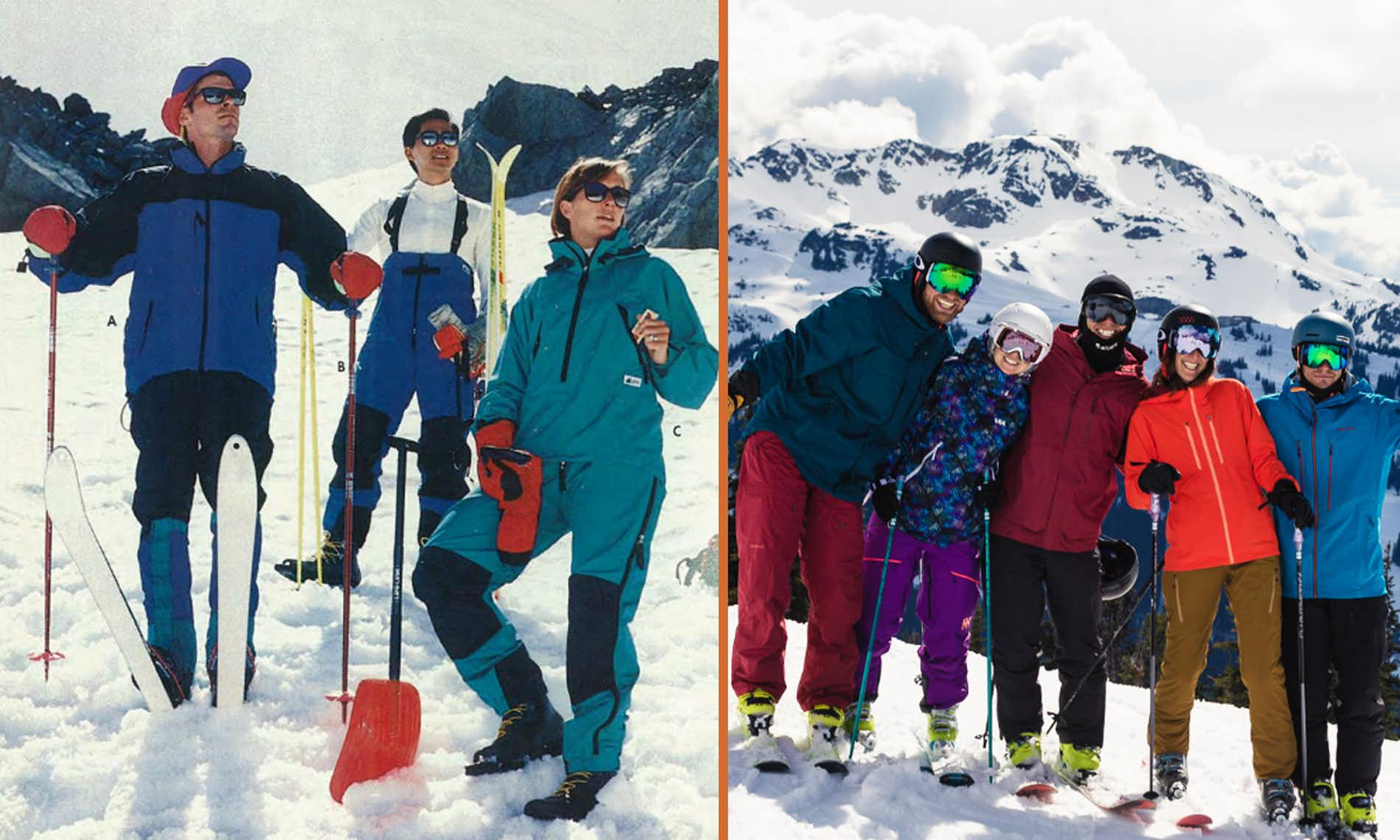
The 1990’s (left) and now (right). Photo by MEC.
Part of a series on Canadian Fashion History. Read more HERE.

